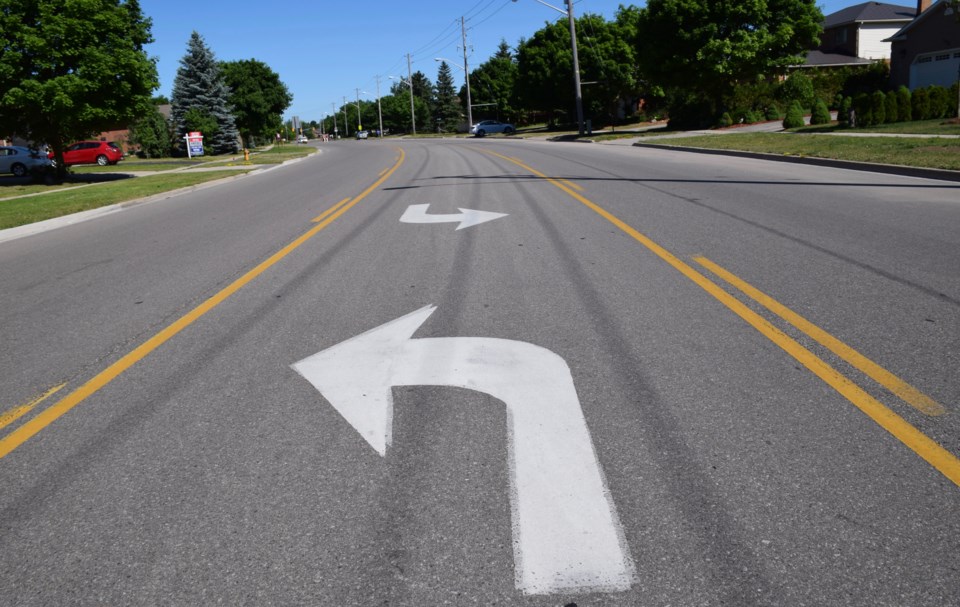The City of Guelph is about to tackle traffic challenges on bustling Downey Road.
Staff has a number of proposed measures and is looking for input and tweaks from the public before going ahead with the work.
The first opportunity to see what’s proposed is on Thursday night, 6:30–8:30 p.m. at the Kortright Hills Public School gymnasium, 23 Ptarmigan Drive.
Downey Road has become more densely residential in recent years, and at the same time is a regional access road into and out of the city. Both factors contribute to heavier traffic, and that traffic tends not to strictly observe the 50 km/hr speed limited, a city official indicated.
The employment lands of the Hanlon Creek Business Park, located nearby along the rural section of Downey, are slowly filling up, contributing to the traffic problems.
The section of the street between Woodland Glen Drive near the YMCA-YWCA of Guelph and Teal Drive, is the stretch of concern to the city.
“In the shorter term, what we’re hoping to do — and what we are getting feedback on — is to put in bicycle lanes on both sides of Downey,” said Allister McIliveen, the city’s manager of transportation services, in an interview Tuesday morning.
“In comes down to, can we put the bicycle lanes in and save some on-street parking for Mollison Park, which is what people have asked for.”
The city is also looking to install pedestrian refuge islands at certain key points along the Teal to Woodland Glen stretch, also at the request of residents. Crossing the stretch has become more of a risk in recent times.
“We are also looking at speed cushions, and we are looking at horizontal deflections, or bumpouts — things like that that we can space out,” McIliveen added.
Speed cushions are a variety of speed bump with wheel cutouts that allow larger vehicles like city buses or emergency vehicle to passed unaffected, but which reduce passenger car speeds. Horizontal deflections can include include chicanes, curb extensions, corner radius reductions, on-street parking, and raised median islands.
McIliveen said for many years there have been many complaints about the volume and speed of traffic through the residential neighbourhood.
The question is, can the traffic be diverted onto more high-speed roadways, or at the very least slowed down to the posted speed limit, he said. Currently, getting out of driveways during peak times is difficult for many residents, and slowing traffic down would make it easier.
“They also want to make it easier for pedestrians to cross the road, so that’s where pedestrian refuge islands come in, so you can cross half the road at a time,” he added. “Those are issues that have been common over the last five to 10 years.”
Residents have let their concerns be heard so far in the process.
“We’ve had a lot of good feedback to date, and at these next two workshops we’re hoping people will look at it, make some comments, make some changes, and then we can fine tune the planning,” McIliveen said.
After the Thursday night workshop, a second one will be held on Tuesday, June 28 at Guelph City Hall, 1 Carden Street, from 2-4 p.m. At both community workshops residents will be invited to comment on their preferred option, and evaluate the traffic calming features.
The conceptual design options and traffic calming measures so far have come after much public feedback and traffic analysis, according to the city.
For more information about the Downey Road transportation improvement study, visit guelph.ca/construction and look for the project link under “design study underway.”
